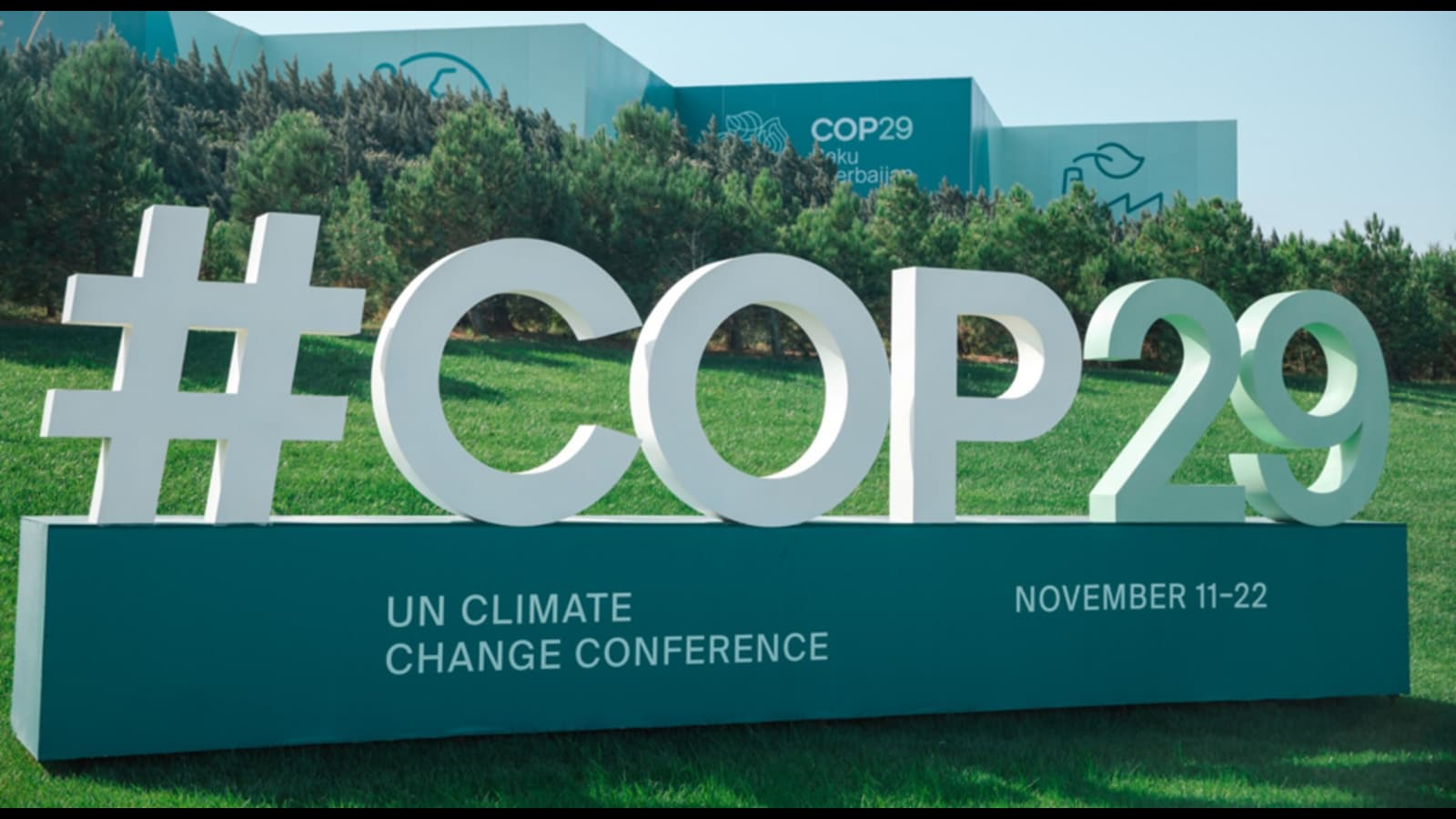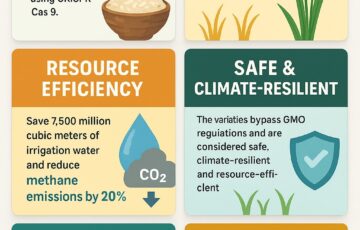CLIMATE FUNDING CHALLENGES AND AMBITIONS AT COP29
Syllabus:
GS-2:
Important International Institutions ,Conservation
GS-3:
Environmental Pollution & Degradation
Focus:
The COP29 summit in Azerbaijan has brought renewed focus on updating climate finance frameworks, with developing nations calling for a substantial increase in annual funds. The current $100 billion annual commitment from advanced nations, set in 2015, is due for a critical review and update by 2025.
Introduction: COP29’s Key Agenda – Financing Climate Action:
- COP29, the 29th annual United Nations climate summit, commenced in Azerbaijan with a primary goal to establish a new roadmap for climate funding.
- The current $100 billion annual commitment by advanced countries, set in 2015, is up for review and potential increase by
- The summit aims to form a New Collective Quantified Goal (NCQG) to support developing nations in their climate action efforts, addressing their specific needs and priorities, which were not considered in previous agreements.
Conference of the Parties (COP): Key Points:
- Origin: COP was established under the United Nations Framework Convention on Climate Change (UNFCCC) signed in 1992 at the Rio Earth Summit.
- First COP: The first COP took place in 1995 in Berlin, focusing on implementing the UNFCCC
- Paris Agreement (COP 21): Adopted in 2015 to limit global warming to below 2°C and provide climate financing to developing nations.
-
COP 29: To be hosted by Azerbaijan in 2024, focusing on net-zero transitions and addressing the $100 billion annual climate finance commitment.
- Truce Proposal: Azerbaijan proposes a two-week COP truce to shield discussions from geopolitical conflicts and foster climate unity.
- Challenges: Many countries struggle with inadequate resources and institutional capacity for effective climate action plans (NDCs).
New Collective Quantitative Goal (NCQG): Key Points
- Purpose: The NCQG is a new financial target that developed nations must meet annually from 2025 to support climate action in developing countries.
- Replacement of Previous Goal: It will replace the unfulfilled 2009 pledge of USD 100 billion per year from wealthy nations.
- Focus of COP29: Negotiations at COP29 in Azerbaijan aim to set a higher collective target for financing mitigation, adaptation, and climate resilience.
- Importance for Developing Nations: Adequate NCQG funding is critical to overcome financial barriers and implement effective climate strategies in vulnerable nations
Current Funding Needs and Proposals:
- The United Nations Conference on Trade and Development (UNCTAD) estimates developing nations’ climate action needs will amount to $2.1 trillion by 2025, reaching $3.8 trillion by 2030.
- At least 75% of this amount should come from wealthy nations, translating to 4% of their GDP.
- Comparatively, this percentage is lower than recent significant expenses in developed countries, indicating feasibility.
The Adaptation Finance Gap:
- The 2021 Glasgow Pact committed wealthy nations to double adaptation finance from 2019 levels by 2025, yet adaptation funding remains significantly short.
- The UN’s Adaptation Gap Report highlights that while adaptation finance grew from $22 billion in 2021 to $28 billion in 2022, it remains insufficient.
- Even a projected $40 billion by 2025 would narrow the adaptation gap by only 5%, falling far short of the actual requirement of $387 billion annually.
Potential Setbacks in Climate Action: U.S. Political Dynamics:
- Concerns arise from the potential return of Donald Trump to the U.S. presidency, given his previous withdrawal from the Paris Agreement.
- Although Trump’s exit from the agreement was reversed, shifts in U.S. policy could impact global climate commitments, especially as the U.S. is the second-largest greenhouse gas emitter.
- Laurence Tubiana, CEO of the European Climate Foundation, stresses that while political changes may slow progress, economic momentum and climate realities continue to drive the global transition.
Climate Targets and Emission Reduction Demands:
- Vulnerable nations are urging industrialised countries to adopt more ambitious emission reduction targets and expedite the shift from fossil fuels.
- Recent global temperature data supports these demands, as temperatures from February 2023 to January 2024 averaged 5°C above pre-industrial levels.
- The National Oceanic and Atmospheric Administration’s (NOAA) greenhouse gas index (AGGI) shows a 52% increase in the warming potential of greenhouse gases since
Progress on Carbon Market Rules and Carbon Credits:
- COP29 has made strides in finalising global carbon market regulations, which allow companies to offset emissions by investing in green projects for carbon credits.
- Despite this, UNCTAD reports that carbon credit values from Least Developed Countries (LDCs) remain minimal.
- In 2023, LDCs derived only $403 million from carbon credits, a small fraction compared to other funding sources like foreign direct investment and development aid.
Urgency for Climate Finance Reform and Developing Nations’ Demands:
- Developing Nations’ Priorities: Countries like India have called for a climate finance commitment from developed nations of around $1 trillion annually to meet rising climate adaptation and mitigation costs.
- Need for Immediate Action: UNCTAD’s analysis highlights that only with prompt, large-scale funding can developing nations make substantial progress toward their climate goals, including safeguarding communities against climate risks like flooding, droughts, and extreme weather events.
- Resource Allocation Gaps: With current contributions falling short, a major funding reallocation is necessary to cover a $349.6 billion gap in adaptation finance projected by
Increasing Accountability and Transparency in Climate Financing:
- Monitoring Financial Commitments: As the NCQG develops, mechanisms to track and verify fund allocations are critical to ensure that committed resources reach vulnerable nations and are used effectively.
- Strengthening Accountability: Enhanced transparency measures would address concerns about climate finance misuse, increasing confidence among both donor and recipient countries.
- Aligning with Paris Agreement Goals: Accountability systems aligned with the Paris Agreement’s objectives can help keep global temperature rises below 1.5°C, reinforcing international collaboration to reduce emissions and transition to sustainable energy sources.
Conclusion: High Stakes for COP29 on Climate Funding and Action
- COP29 holds crucial decisions for financial frameworks, emission targets, fossil fuel reduction, and carbon market improvements.
- If successful, a robust financial framework at COP29 could support the next phase of global climate action.
- However, the achievement of these ambitious goals will depend on the commitments from developed nations, their readiness to provide substantial climate funding, and their resolve to maintain momentum in climate action amid shifting political landscapes.
Source: Mint
Mains Practice Question:
“Discuss the significance of climate finance for developing countries and analyze the challenges in achieving the New Collective Quantified Goal (NCQG) set for 2025 under the Paris Agreement.”






